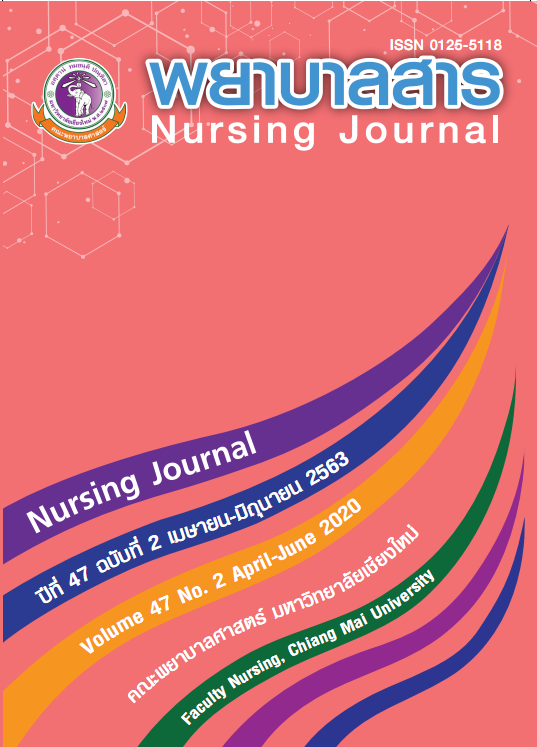Development of a Nosocomial Infection Surveillance System, Tambon Health Promoting Hospitals
Keywords:
nosocomial infections surveillance system, Tambon health promoting hospitals, DevelopmentAbstract
Surveillance of infections resulting from medical services is important in prevention of nosocomial infections (NI). This developmental research aimed to develop a NI surveillance system in Tambon health promoting hospitals using the collaborative quality improvement method developed by the Institute for Healthcare Improvement in the United States. The research was conducted during July to October 2014. The study sample was purposively selected from the personnel of 9 Tambon health promoting hospitals, altogether 34 participants. These participants were divided into quality improvement teams, 1 per hospital, with 1 participant taking responsibility for infection prevention and control at each hospital. The remaining 25 participants participated in a NI surveillance system questionnaire. The research tools included a NI surveillance system development plan and a NI surveillance system questionnaire. Three workshops were conducted for the quality improvement teams to provide knowledge on NI surveillance as well as to brainstorm ways to develop a NI surveillance system with the expert consultation. The quality improvement teams implemented the outcomes from each workshop at their hospitals. Data were analyzed using descriptive statistics.
The developed NI surveillance system consisted of definitions and surveillance forms for urinary tract infections and skin and soft tissue infections, targeted surveillance of infections from suturing, injection, and urinary catheterization. Steps in NI surveillance included diagnosing infections, recording data using the surveillance form, calculating monthly infection rates, and presenting data at monthly meetings. Overall, 96% of participants surveyed felt that the definition of NI surveillance was clear and practical, 92% felt the definition was easy to understand and covered all infections occurred and that the surveillance form included all the necessary variables, was in a suitable format, and data was easy to record. All participants agreed that the surveillance method was appropriate and useful for prevention of infections. They felt that the NI surveillance methods were practical (92%) . They also felt that the surveillance steps used less time (96%) and was practical (92%). Participants noted that lack of time (68%), lack of knowledge (52%) and lack of consultation in the diagnosis of infection (40%) were obstacles to NI surveillance. Participants said they needed training (96%), a NI surveillance manual (76%), and NI surveillance consultants (60%) to properly address NI surveillance at their hospital.
These findings show that a developed NI surveillance system can be used practically in Tambon health promoting hospitals.
References
Edmond, M. B. (2003). National and international surveillance s ystems for nosocomial infection. In R. P. Wenzel (Ed.), Prevention and control of nosocomial infection (pp. 109-119). New York: Churchill Livingstone.
Gastmeier, P., Schwab, F., Behnke, M., & Geffers, C. (2012). Decreasing healthcare-associatedinfections (HAI) is an efficient method to decrease healthcare- associated Methicillin-resistant S. aureus (MRSA) infections Antimicrobial resistance data from the German
national nosocomial surveillance system KISS. Antimicrobial Resistance and Infection Control, 1 (1), 3. doi:10.1186/2047-2994-1-3
Institute for Healthcare Improvement [IHI]. (2003). The Breakthrough Series: IHI’s collaborative modelfor achieving breakthrough improvement. Retrieved from http://www.ihi.org/knowledge/Pages/IHIWhitePapers/TheBreakthroughSeriesIHIsCollaborativeModelforAchievingBreakthroughImprove-ment.aspx
Provincial Health Station .(2013). Health system report. Surat Thani: Provincial Health Station. (In Thai)
Sukapan, N. (2009). Development of a nosocomial infection surveillance system using collaborative quality improvement of Community Hospitals in Chiang Rai Province (Master’s thesis, Chiangmai University). (In Thai)
Unahalekhaka, A. (2008). Collaborative quality improvement redu ced ventilator-associated pneumonia in a limited resource country. International Journal of Infection Control, 4(1), 1-3.
Downloads
Published
How to Cite
Issue
Section
License
บทความที่ได้รับการตีพิมพ์เป็นลิขสิทธิ์ของวารสารพยาบาลสาร
ข้อความที่ปรากฏในบทความแต่ละเรื่องในวารสารวิชาการเล่มนี้เป็นความคิดเห็นส่วนตัวของผู้เขียนแต่ละท่านไม่เกี่ยวข้องกับมหาวิทยาลัยเชียงใหม่ และคณาจารย์ท่านอื่นๆในมหาวิทยาลัยฯ แต่อย่างใด ความรับผิดชอบองค์ประกอบทั้งหมดของบทความแต่ละเรื่องเป็นของผู้เขียนแต่ละท่าน หากมีความผิดพลาดใด ๆ ผู้เขียนแต่ละท่านจะรับผิดชอบบทความของตนเองแต่ผู้เดียว






